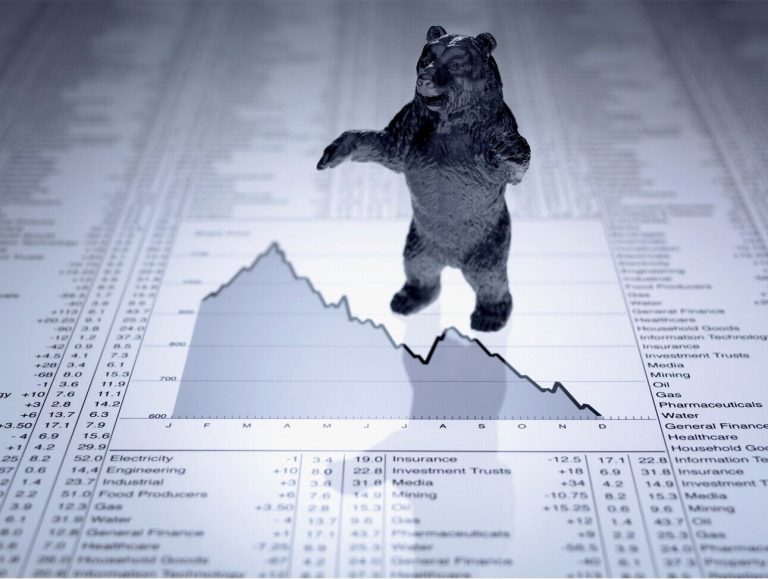European markets got off to a poor start to the new quarter and the week yesterday, as higher yields and a stronger US dollar helped to keep investors on the back foot.
The FTSE100 had a particularly disappointing day, slipping below last week’s low to its lowest level since 13th September, with all sectors sinking into negative territory. We’ve seen similar price action in Asia markets which have also come under pressure with the Nikkei 225 slipping to 4-month lows, while the RBA kept rates unchanged at 4.1%. This weakness looks set to see markets in Europe continue the negative theme of yesterday and open lower.
The weekend agreement by US lawmakers to fund the government until 17th November, while kicking that problem into the long grass, has merely served to refocus investor attention on the resilience of the US economy.
The agreement also shifted the odds towards another rate hike from the Federal Reserve in just under a months’ time given that economic activity in the manufacturing sector appears to have bottomed out in the short term.
Yields in US treasuries, as well as UK gilts rose sharply on the day helping to act as a drag on equity markets, with the long end of the curve rising much more sharply as markets looked to price in the prospect of at least one more rate hike from both the Federal Reserve and the Bank of England, as well as the prospect that rates are likely to stay at current levels for some time to come.
The rise in the US 10-year yield saw it finish at its highest level in 16 years, while the 30-year yield closed at a 13-year high, as fresh comments from various Fed officials made the case for additional rate hikes, with Fed governor Michelle Bowman remaining hawkish in comments made at a banking conference in Banff yesterday. Cleveland Fed President Loretta Mester adopted a similar view at a local business event.
US markets also underwent what can only be described as a choppy session with the Nasdaq 100 managing to put in a strong session driven mainly by strong gains in the big cap giants of Nvidia, Alphabet, Microsoft and Meta Platforms, even as over half the index constituents finished the day in negative territory, while the Russell 2000 finished at a 4-month low, suggesting that for all the bullishness around the other major US indices, confidence at the small business level is slightly more fragile.
This divergence could well become even more apparent if yields as well as the US dollar continue their relentless climb, and the inversion continues to unwind in the most painful of fashions, as long term yields rise sharply.
This was a message that Fed chairman Jay Powell received loud and clear from small business leaders at a roundtable in Pennsylvania yesterday, when he was assailed from all sides over the impact that inflation, high interest rates, and labour shortages were having on their businesses, as well as other challenges facing the US economy, as interest rates reset to more normal levels.
Yesterday’s ISM manufacturing survey for September appeared to show that these challenges might be abating, with prices paid slowing and hiring picking up, with this week’s various jobs data hoping to reinforce this trend.
Today’s JOLTS report for August is expected to show that vacancy rates remained steady at 8.83m, unchanged from July as the US labour market continued to show its resilience.
EUR/USD – slipped below the 1.0480 lows of last week. This move below 1.0480 has the potential to retarget parity. The main resistance remains back at the 1.0740 area, which we need to get above to stabilise and minimise the risk of further weakness.
GBP/USD – slipped below the lows of last week at 1.2110 keeping the risk very much tilted towards the 1.2000 area, while below resistance at the 1.2300 area in the short term. Only a move back above the 1.2430 area and 200-day SMA stabilises and argues for a return to the 1.2600 area.
EUR/GBP – bias remains lower while below the 0.8700 area and resistance at the 200-day SMA at 0.8720, which is capping the upside. A break of 0.8720 targets the 0.8800 area, however while below the bias remains for a move back to the 0.8620 area.
USD/JPY – bias remains for a move towards the 150.00 area, with a move above the 150.20 area targeting the potential for a move towards last year’s peak at 152.00.
Disclaimer: CMC Markets is an execution-only service provider. The material (whether or not it states any opinions) is for general information purposes only, and does not take into account your personal circumstances or objectives. Nothing in this material is (or should be considered to be) financial, investment or other advice on which reliance should be placed. No opinion given in the material constitutes a recommendation by CMC Markets or the author that any particular investment, security, transaction or investment strategy is suitable for any specific person. The material has not been prepared in accordance with legal requirements designed to promote the independence of investment research. Although we are not specifically prevented from dealing before providing this material, we do not seek to take advantage of the material prior to its dissemination.

